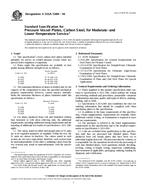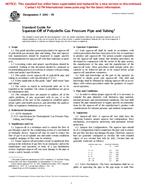1.1 This practice covers procedures for obtaining a manual gross sample from beneath the surface of coal in railroad cars, barges, trucks, or stockpiles. These procedures are to be used to provide gross samples for estimating the quality of the coal. The gross samples are to be crushed, divided, and further prepared for analysis in accordance with Practice D 2013.
1.2 This practice provides instruction for sampling beneath the exposed surface coal to a depth of approximately 61 cm (24 in.). Collect samples at this depth to get below the surface of the material, since drying and oxidation may have occurred at, or near the surface. Changes in moisture, in particle size, and in other properties continue to occur deeper in the coal and, although not as drastic as near the surface, will cause the method to be biased. The user should review the conditions of the coal (weather conditions, prior transport, settling time, and so forth, see 8.1) so that the interested parties can agree that potential biases are not overly great or that some adjustment in specifications is warranted. Sample increments collected from the surface layer(s) of coal in railroad cars, barges, or stockpiles are classified condition “D” (see Practice D 2234, Increment Collection Classification). It is a good practice to require that “details of sampling procedure shall be agreed upon in advance by all parties concerned” whenever collection of sample increments falls under condition “D.” This practice offers a sampling procedure that parties may use to meet requirements of Practice D 2234 for condition “D.” The practice does not produce samples that satisfy precision requirements of Practice D 2234 general-purpose sampling, or Practice D 2234 special-purpose sampling.
1.3 The user is cautioned that samples of this type do not satisfy the minimum requirements for probability sampling and as such cannot be used to draw statistical inferences such as precision, standard error, or bias.
1.4 This sampling method is intended for use only when sampling by more reliable methods that provide a probability sample is not possible.
1.5 The quantities stated in either acceptable SI units or in inch-pound units are regarded separately as standard. The quantities stated in each system may not be exact equivalents; therefore, each system must be used independently of the other, without combining quantities in any way.
1.6 This standard does not purport to address all of the safety concerns, if any, associated with its use. It is the responsibility of the user of this standard to establish appropriate safety and health practices and determine the applicability of regulatory limitations prior to use.
Product Details
- Published:
- 06/01/2004
- Number of Pages:
- 5
- File Size:
- 1 file , 54 KB
- Redline File Size:
- 2 files , 90 KB


